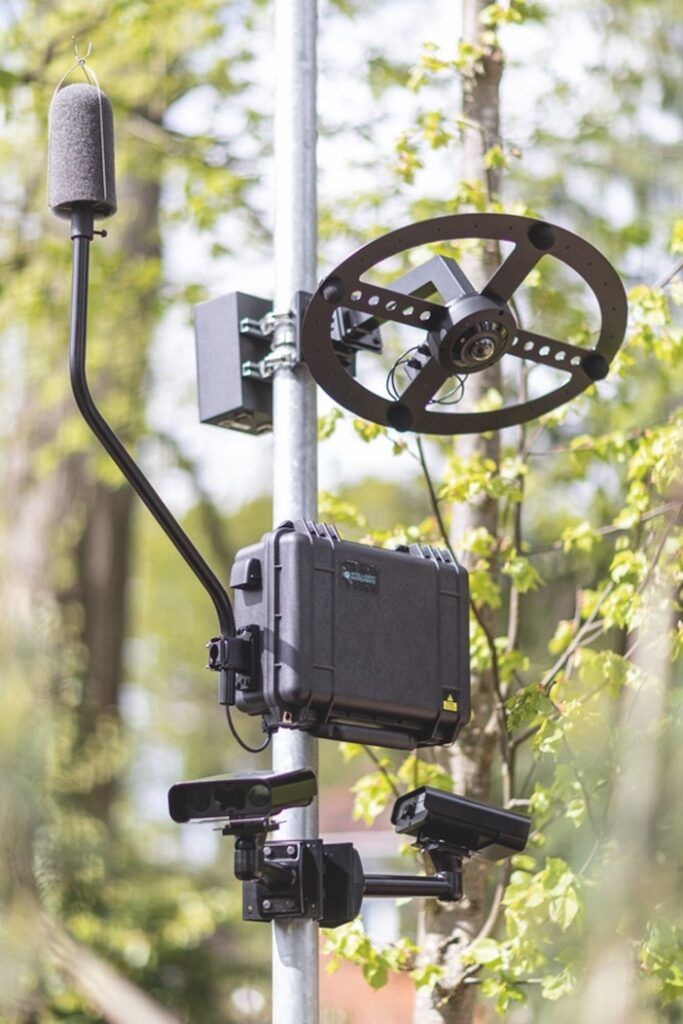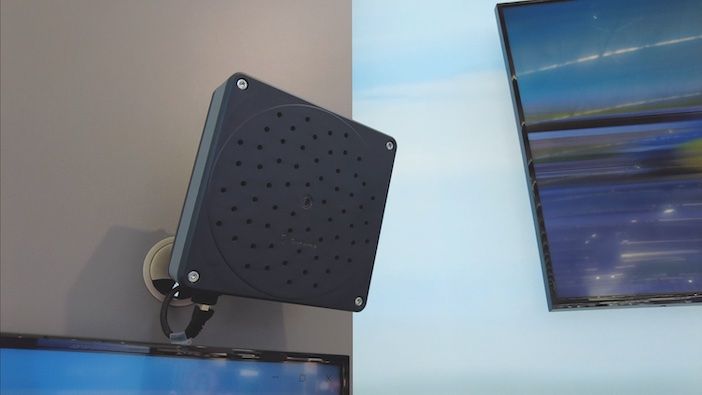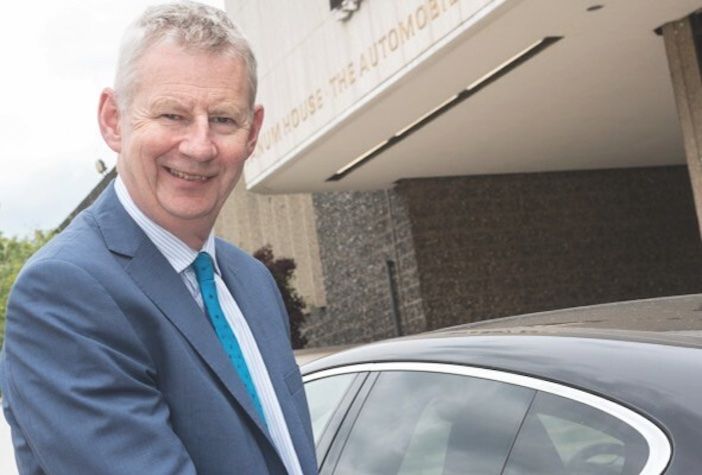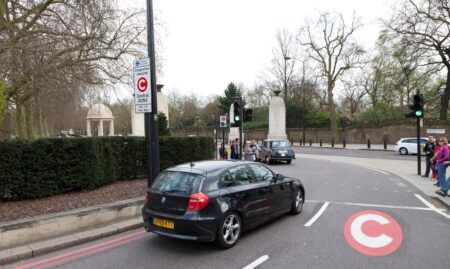Whether it’s someone using a mobile phone inside their car while driving or excessive noise emitted from their vehicle, new cameras using AI enforcement techniques are enabling authorities to improve safety and reduce the harm that can be caused by irresponsible vehicle use
Traffic enforcement systems have evolved from catching speed and red-light violators to the detection of moving-traffic offences and most recently roadside technology has become capable of spotting drivers using mobile phones at the wheel, not wearing seatbelts, or even those breaking laws against creating excessive noise.
The latest new abilities are enabled, as is increasingly the case across so many industries, by the advent of artificial intelligence systems. These can learn and interpret patterns in the real world and perform data fusion, for example, combining audio and video feeds to precisely identify vehicles making excessive noise.
One of the pioneers of ‘noise camera’ technology is the UK’s Intelligent Instruments. It recently won an Intertraffic Award for its SoundVue system, which is being piloted around the world, including in New York City (NYC passed new legislation to criminalize the creation of excessive noise with vehicles and provide for enforcement), in London (existing Public Space Protection Order (PSPO) legislation is used for enforcement in the UK) and Knoxville, Tennessee.
“Whether people modify their exhaust pipes, or they’re revving their engines unnecessarily and driving antisocially, SoundVue captures noise levels and video,” says Intelligent Instruments’ cofounder David Cole. “It then packages it up and sends it to the cloud where someone can review it and see if action needs to be taken.”
Of course, with such potential in this new area of traffic enforcement, SoundVue is not without its competitors. Brazil’s Mobilis Technologica has created a Noise Detector, which it is says is ideal for safeguarding the tranquility of critical locations such as hospitals, clinics, schools, and retirement homes. “Beyond combating sound pollution, this system also acts as an air pollution indicator,” says a Mobilis Technologica spokesman. “Excessive noise from exhausts can signal harmful gas emissions, so we aid more effective environmental monitoring.”
“We have studies connecting noise with physiological effects such as heart diseases and sleep disturbance. We have a lot of evidence quantifying the health effects of noise”
Dr Antonio Torija-Martinez, associate professor in acoustic engineering, University of Salford
Meanwhile a Dutch collaboration between Sorama and Axis Communications deployed eight noise camera devices on the streets of Eindhoven; and Germany’s Jenoptik launched its own noise camera prototype at this year’s Intertraffic Amsterdam.
“Noise can actually make people sick and ill. More and more customers are asking about these kinds of solutions,” says Tobias Deubel, the new head of Jenoptik Smart Mobility Solutions. Indeed, the World Health Organization (WHO) has identified noise pollution as the second most harmful environmental cause of ill health, surpassed only by fine particulate air pollution, with at least one million premature deaths attributed to excessive long-term environmental noise exposure per year in Western Europe alone.
“We have studies connecting noise with physiological effects such as heart diseases and sleep disturbance. We have a lot of evidence quantifying the health effects of noise,” says Dr Antonio Torija-Martinez, associate professor in acoustic engineering at the University of Salford, Manchester, UK.

To catch those making excessive noise in vehicles the SoundVue system uses four small microphones set in a dish, using subtle timing differences in the sound to pinpoint the source position. “It measures sound levels very accurately, when combined with three cameras and microphone array,” says Intelligent Instruments’ cofounder Rueben Peckham. “If there are multiple vehicles in the video, then it is able to determine which is the vehicle that has caused the extra sound.”
Similarly, Jenoptik’s noise detection system features an acoustic array fitted with multiple Class 1 microphones – the same class that SoundVue uses, for the highest precision available outside of a laboratory setting. It is designed for “vehicle classification and tracking” and “acoustic anomaly detection”, which could go beyond vehicle noise to help with general law enforcement, for example if the sound of a gunshot it detected. Any sound can be tracked reliably to its source.
Jenoptik’s noise camera can be paired with its popular Vector ALPR camera to identify offenders in vehicles. Once a predefined decibel level is hit or a noise anomaly registered, authorities can be alerted automatically. “You can identify which vehicle produced the noise – and then you can make people pay for using cars too loudly,” says Deubel.
Both the Jenoptik system and SoundVue are being used in pilots, with the latter already well received in the London Borough of Kensington and Chelsea, which now boasts a total of eight cameras issuing £100 fines. Trials are also underway in the UK in Bradford, Bristol, Great Yarmouth, and Birmingham.

Despite fines being issued, unlike automated speed enforcement the system remains under human control, with enforcement officers making the final decision on whether to issue fines after discerning between anti-social driving and legitimate breaches of the legal limits.
One of the reasons for this is that sound can be subjective and there may be mitigating circumstances, for example a car rally may be taking place or there could be an emergency. “Noise could be a Harley Davidson motorbike for you, but not for me,” says Dr Torija-Martinez. “Two subjects might be exposed to the same sound level expressed in decibels, but there are other factors influencing perception.”
Mobile-phone enforcement cameras
Another new frontier in enforcement is the detection of distracted driving. Again, a pioneer in this field is also a past Intertraffic Award winner – Australia’s Acusensus won in Amsterdam in 2022 for its pioneering AI system that can accurately detect mobile phone use and seatbelt violations.
“The use of handheld phones at the wheel has been illegal for 20 years but it is obvious that more needs to be done so stop this potentially fatal habit”

Edmund King OBE, director, AA Charitable TrustOver the past two years its system, as well as rivals, have been trialed around the world. Extensive pilots have taken place in the UK, with the new enforcement earning support from the AA (Automobile Association) in December 2023.
“The use of handheld phones at the wheel has been illegal for 20 years but it is obvious that more needs to be done so stop this potentially fatal habit,” said Edmund King OBE, director of the AA Charitable Trust. “Sophisticated camera technology can help target offenders… This will make our roads safer for all.”
In February 2024 Aecom announced that it was acting as systems integrator for Acusensus in the UK in further pilots in conjunction with National Highways and 10 police forces: Durham, Greater Manchester Police, Humberside, Staffordshire, West Mercia, Northamptonshire, Wiltshire, Norfolk, Thames Valley Police and Sussex.
At Intertraffic 2024 in April, alongside its noise camera, Jenoptik unveiled its distracted driving prototype, which is says is the first ever such enforcement system designed to work on all vehicle classes. “We are piloting it in its first projects now,” says Deubel. “It can detect mobile phone usage during driving as well as seatbelt violations.”
The innovation that makes Jenoptik’s system extremely versatile is the fact that it employs not one but two high-resolution 5K, AI-powered cameras: one camera is mounted high up and steeply angled to look down into vehicle windshields, and primarily tasked with detecting phone usage on laps and checking seatbelt indicators. Complementing it is a flat camera, optimized for spotting phones held to the ear, additional seatbelt checks, and enabling automatic license plate recognition (ALPR). “We believe you need good systems, good cameras, and the right angle to make sure you have the best possible outcome,” says Deubel.

“For our distracted driving solution we use an extra piece of hardware to create different viewing angles”
Tobias Deubel, head of division, Jenoptik Smart Mobility Solutions
Deubel believes that the distracted driving solution is a good example of how, despite the benefits of sensor fusion and AI-enabled analysis, which can deliver multi-functional devices, dedicated setups are crucial for optimal accuracy.
“For certain applications, you need certain devices and setups – it must be the right tool for the right job,” says Deubel. “For our distracted driving solution we decided to use an extra piece of hardware to create different viewing angles, which helps to overcome the different challenges in identifying violators.”

The system is designed for round-the-clock vigilance, with an illumination system enabling “24/7 day and night observation.” It also offers further flexibility in that the solution can be deployed as a stationary option: mounted on existing or new infrastructure or as a mobile self-sufficient trailer solution.
Cutting-edge technology and sensor fusion, tackling distracted driving and noise pollution, have the potential to make our surroundings safer for generations to come. And with the capabilities of AI growing rapidly there is real potential for new types of enforcement to be enabled that haven’t even been invented yet.
This article is edited form the full article which first appeared in the June 2024 edition of TTi magazine





